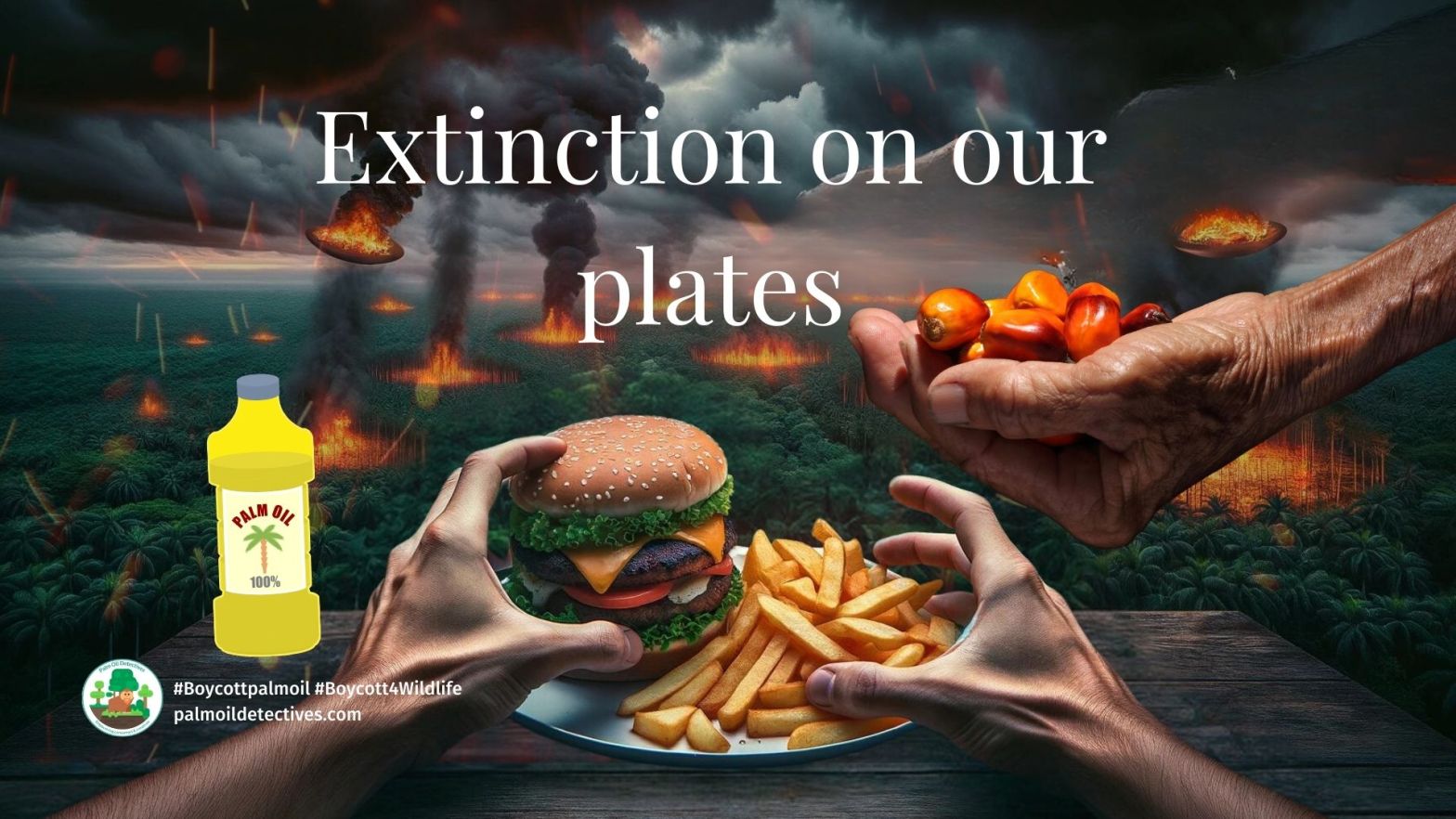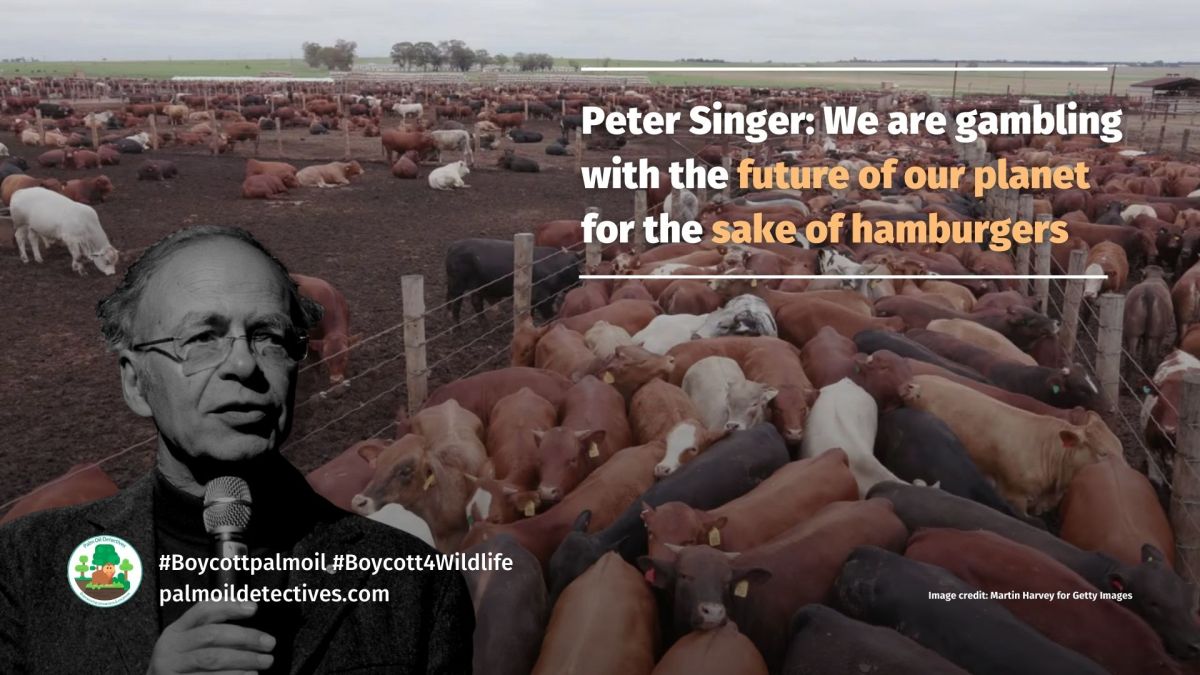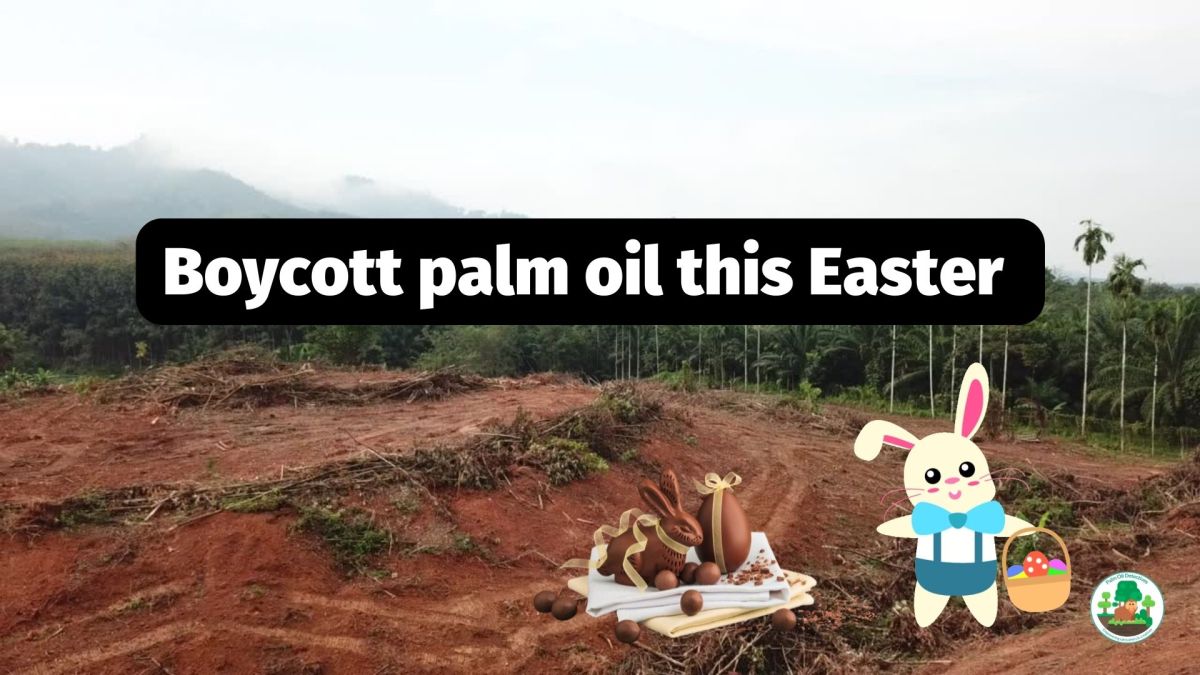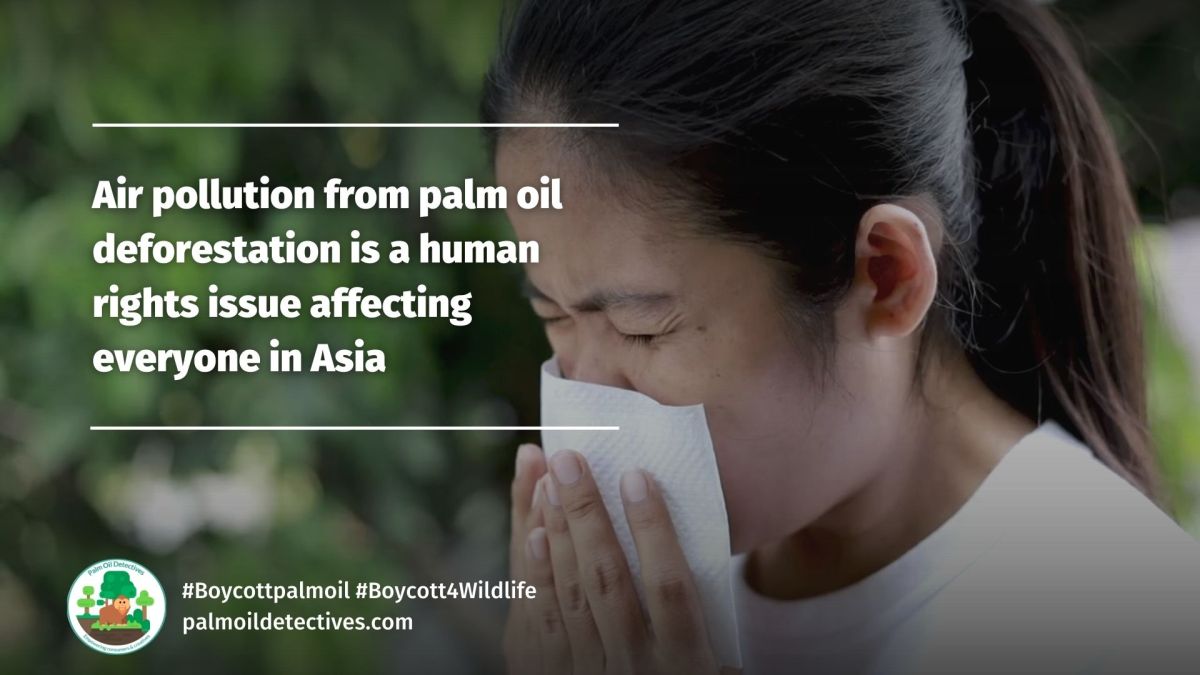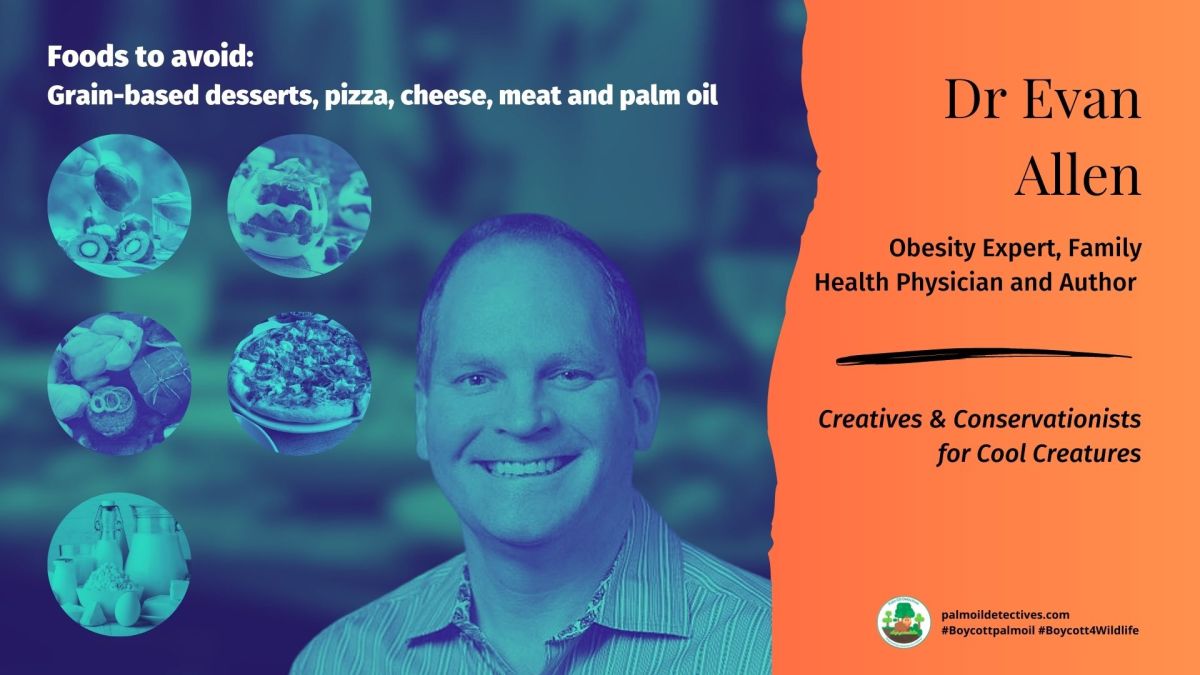The contents of your fridge and dining table directly impacts the future of rare rainforest and ocean animals. That’s because industrial agriculture and aquaculture for commodities like meat, dairy, fish and palm oil is driving animals in the most biodiverse ecosystems on the planet closer towards extinction.
However, reducing the biodiversity footprint of global food consumption requires more than just consumer intervention. It requires immediate and widespread action from government policy-makers and law-makers as well, writes Ecologist Dr Quentin Read of North Carolina State University for 360info
Extinction On Our Plates: 🔥😿 Expanding agricultural land for #meat 🥩 #dairy 🧈 and #palmoil is pushing #biodiversity past limits for survival. Help animals, use your wallet 🤑 as a weapon, be #vegan 🥦 #Boycottpalmoil #Boycott4Wildlife @palmoildetect https://wp.me/pcFhgU-71v
DYK what you buy and eat either helps or hurt wild #animals? 😿 Commodities like #meat 🥩 and #palmoil 🪔are driving wild animal #extinction. Fight for them 💪 and be #vegan 🥕 #palmoilfree #Boycottmeat 🤩#Boycottpalmoil #Boycott4Wildlife @palmoildetect https://wp.me/pcFhgU-71v
Article written by Dr Quentin Read, data scientist and ecologist. He is currently the Southeast Area Statistician with the Agricultural Research Service (USDA-ARS) based at North Carolina State University. This article has been republished for the COP15 Biodiversity Summit. Originally published under Creative Commons by 360info™.
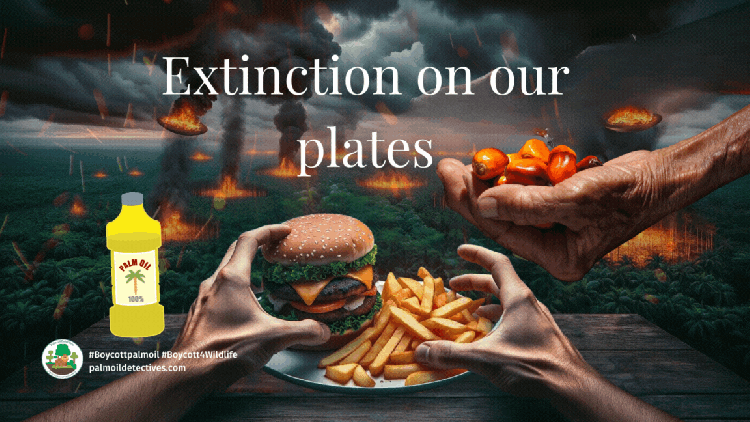
Land is foremost among those resources. As food is transported from farm to fork, the land used to grow the food is ‘virtually transported’ along with it. Depending on what you’re eating, one bite might have a potpourri of virtually embedded land supporting a wide diversity of wild plants and animals.
The food on our plates has a footprint. Every bite of food we consume represents the environmental impact of all the resources used to produce that food
Expanding agricultural land is pushing biodiversity past a safe limit
Wild biodiversity is under threat from the production and consumption of global food systems. Some species may already be ‘walking dead’, doomed to extinction because they no longer have a habitat large enough to avoid a population crash.
In collaboration with NASA, researchers from universities across the United States are undertaking complex geospatial statistics to closely examine these future biodiversity impacts. Similar efforts around the world are leading some governments, including the United States, to set priorities to protect land within their borders.
But more ambitious conservation efforts are urgently needed.
Latest estimates show 64 percent of land in North America would need to be conserved to safeguard biodiversity, primarily because of the ecologically intact areas of Canada and the United States. By contrast, at least 33.1 percent of Europe’s land area requires conservation. The most threatened land is concentrated in developing countries where mining and farming are economic mainstays. More than half of the most at-risk habitat is in Africa.
To preserve biodiversity we must not only work on protecting natural habitats but also on reducing the food system’s demand for land. If we’re expected, as predicted, to feed 10 billion people by 2050, all that extra food would require clearing at least 1.5 billion acres of forests, savannas and wetlands, an area nearly twice the size of India.
However, all is not lost
There are two key ways governments and individuals can reduce the land demand pressure from the food system: eating a smart plant-based diet and reducing food waste.
First, consider your diet. Animal products need large amounts of land to grow feed and pasture livestock. This includes not only meat but also dairy, eggs, and even fish, which are increasingly sourced from aquaculture farms that use land-grown feed. A smart plant-based diet is a major way to reduce land demand and biodiversity impact relative to a diet high in meat and dairy.
But not just any plant-based diet will do. Only a smart plant-based diet that avoids sourcing too much food from regions that have high levels of imperiled biodiversity will reduce impact relative to a diet high in meat and dairy.
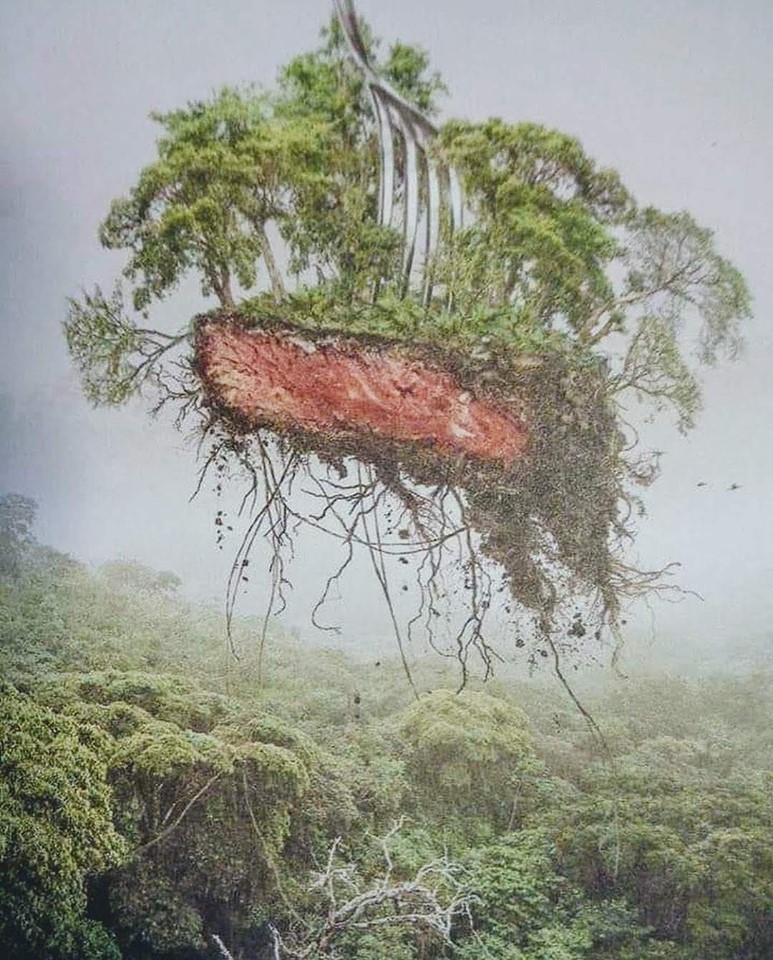
This means reducing consumption of some of our favourite foods like avocados, chocolate, cashews, and other tropical fruits. The international food trade of products like these spreads local biodiversity impacts around the globe.
If that sounds too hard, then here’s the good news. Reducing pre-consumer and consumer food waste by 50 percent – which might be an easier change than a radical diet overhaul – has almost as much positive impact on reducing land demand in high-biodiversity areas as changing diets does. In the United States, cutting food waste in half has the potential to reduce biodiversity impacts by 18 percent.
Diet and food waste adaptations are not just up to individuals – governments must play a part
It’s important to keep in mind that both diet changes and food waste reduction are not only individual choices. Governments could implement policies that more aggressively target food waste on the farm, in the supermarket, and in the home. As a recent UN report showed, developed-world household waste is currently on the rise globally. Incentivising the production of plant-based meat alternatives would also help consumers make biodiversity-friendly choices.
There are challenging decisions to be made. We need to carefully navigate complex issues and unforeseen consequences to reduce biodiversity impacts of the food we eat. An important piece of the puzzle is helping consumers better understand how their diets and food waste behaviors influence global biodiversity. This means tough trade-offs at the personal and societal level may be needed to better balance human health, economics, and environmental sustainability.
Article written by Dr Quentin Read, data scientist and ecologist. He is currently the Southeast Area Statistician with the Agricultural Research Service (USDA-ARS) based at North Carolina State University. This article has been republished for the COP15 Biodiversity Summit. Originally published under Creative Commons by 360info™.
ENDS
Read more about human health, veganism, nutrition and why you should #Boycottpalmoil, #Boycottmeat for your own and the planet’s health
Contribute in five ways
1. Join the #Boycott4Wildlife on social media and subscribe to stay in the loop: Share posts from this website to your own network on Twitter, Mastadon, Instagram, Facebook and Youtube using the hashtags #Boycottpalmoil #Boycott4Wildlife.
2. Contribute stories: Academics, conservationists, scientists, indigenous rights advocates and animal rights advocates working to expose the corruption of the palm oil industry or to save animals can contribute stories to the website.
3. Supermarket sleuthing: Next time you’re in the supermarket, take photos of products containing palm oil. Share these to social media along with the hashtags to call out the greenwashing and ecocide of the brands who use palm oil. You can also take photos of palm oil free products and congratulate brands when they go palm oil free.
4. Take to the streets: Get in touch with Palm Oil Detectives to find out more.
5. Donate: Make a one-off or monthly donation to Palm Oil Detectives as a way of saying thank you and to help pay for ongoing running costs of the website and social media campaigns. Donate here

